NIKKOR - The Thousand and One Nights No.56

The Auto NIKKOR WIDE-ZOOM 3.5-8.5cm f/2.8-4
With Tale 56, I will discuss this ephemeral 3.5-8.5cm (35-85mm) f/2.8-4 wide-angle zoom lens, which was canceled before it ever went into production. This tale will bring to light the many unknown episodes and anecdotes accompanying this revolutionary zoom lens, on which work was terminated at the trial production stage. Let me explain the secrets of the Auto NIKKOR WIDE-ZOOM 3.5-8.5cm f/2.8-4.
by Haruo Sato
I. The concave-convex (negative-positive) 2-group zoom lens no one could develop
Actively researched as early as the 1930s, zoom lenses have a long history. The zoom lens concept did not originate with imaging systems, but rather with telescopes and converter lenses. Therefore, the basic concept behind the first zoom lenses was creation of telephoto-type lenses. Noteworthy among them is the Bell & Howell Cooke Varo Lens announced in 1932. With this lens, a zoom system with a concave-convex-concave (negative-positive-negative) 3-group structure was invented with which all lens groups moved. This was the first lens invented that showed the possibilities for wide-angle zoom lenses. Zoom lens development matured primarily with the development first of lenses for cinematography and then for TV. By the 1940s, it had been common knowledge that negative-lead structures like those used for retrofocus lenses were suitable for wide-angle zoom lenses. However, zoom lenses developed for the film industry were not yet sufficient for practical use with still-image photography using large formats like 35mm [135]. Nippon Kogaku Kogyo (now Nikon) also began researching zoom lenses at an early stage, but did not bear fruit until the 1950s. The first wide-angle zoom lens for 35mm [135] format still cameras was presented to the public in 1960. The name of the lens, known to everyone, was the Voigtlander Zoomar 36-82mm f/2.8. It was a concave-convex-concave-convex-convex (negative-positive-negative-positive-positive) 5-group structure zoom lens with which the second and fourth convex groups were linked and moved to change magnification power. Though released with much fanfare, this wide-angle zoom lens left much to be desired in terms of performance, and left the world wondering whether it was simply too difficult to achieve a wide-angle zoom lens for the 35mm [135] format.
However, at around the same time, Nippon Kogaku Kogyo's (now Nikon) Takashi Higuchi, who had been researching zoom lenses, invented his own epoch-making wide-angle zoom lens. It is thought that design of this lens began before 1960. History clearly shows that he did not base his design on the work of Voigtlander designers, but rather came up with his own original design. That zoom lens was the first to utilize the concave-convex (negative-positive) 2-group structure still used by the world's optics manufacturers in the development of normal zoom lenses. What exactly was so epoch-making you ask? In theory, zoom lenses require a minimum of two groups, one that changes magnification power (variator) and one that performs compensation (compensator).
It was also common practice to add a master lens (imaging group) and a focusing group. However, the unusual thing about Mr. Higuchi's design was that he came up with the idea of using the compensation group for focusing, and moving the imaging group to change magnification power. As a result, he achieved the absolute minimum structure needed for a zoom lens. It was already known that the retrofocus type (concave-convex/negative-positive structure) is suitable for wide-angle lenses for SLR cameras. Therefore, it made sense to use a concave-convex (negative-positive) structure for a wide-angle zoom lens. I think that, considering that this lens' master lens (the rear group with convex/positive power) was a Sonnar lens, and that the front group with concave (negative) power was constructed only of mostly concave lens elements, Mr. Higuchi thought of attaching a wide-angle converter to a normal lens and changing magnification power by adjusting the interval between the two. However, this is just conjecture on my part.
The patent application for Mr. Higuchi's invention was filed at the beginning of 1961, and the patent was granted in 1965. Patents were also filed overseas and granted in 1964. This was the moment when Mr. Higuchi's zoom lens was recognized by the world as a genuinely new invention. Surely it was an invention that took the world's lens designers by surprise. This invention prompted optics manufacturers around the world to begin development of concave-convex (negative-positive) 2-group structure zoom lenses. One designer even said that it would take him ten years to catch up with Mr. Higuchi's wide-angle zoom design. That is how significant and revolutionary the invention was. Proof of this lies in the fact that the 2-group structure of Mr. Higuchi's zoom lens can still be seen to this day in the world's normal and wide-angle zoom lenses. One of the most surprising aspects to me is the fact that the second master lens group is a Sonnar type lens. Even with today's designs, it is considered the best to choose between a Sonnar-type and Ernostar-type for the master lens in 2-group zoom lenses, so it makes sense that he chose the Sonnar type lens. It seems that Mr. Higuchi could see into the future. He had a complete understanding of the concave-convex 2-group zoom lens structure at a very early stage.
II. The switch from negative-lead zoom lenses to positive-lead zoom lenses
Though development of the concave-convex (negative-positive) 2-group zoom lens seemed to go smoothly, release of the lens was canceled just before mass production began. Brochures from the time show photos of the lens with text stating that it is "coming soon". However, it was unexpectedly canceled. What happened? Lens barrel designers of the time give two major reasons. The first is that due to a poor cam structure, smooth zooming was not possible. It is said that zooming was uneven, and that with some shooting stances, the lens would extend unexpectedly. The other reason was size. The lens was quite large for a wide-angle or normal lens. I asked Mr. Udagawa of our Design, Trial department to completely overhaul and readjust the one remaining trial production model of this lens based on original drawings. Without a doubt, faults are found in the structure of the lens barrel if compared to today's designs. However, none of these faults can be considered fatal. What's more, the size and weight of the lens are acceptable based on current standards. While an attachment (filter) size of 86mm was probably considered a drawback at the time, it is not considered that large today. In short, the times were just not ready for this lens. The first zoom lens with a maximum aperture of f/2.8 was invented in the 1950s. Even that was nothing less than a miracle.
With the essential abandonment of this great invention of a concave-convex (negative-positive) 2-group structure, Mr. Higuchi would temporarily stop working on the development of this structure. Perhaps it was because he was so shocked that release of the lens was canceled. Instead, he continued work on development of a positive-lead 3-group zoom lens that he examined around the time he was working on the concave-convex (negative-positive) 2-group structure. This zoom lens, which had a convex-concave-convex (positive-negative-positive) 3-group structure, was also a wonderful invention. The patent application for Mr. Higuchi's invention was filed at the beginning of 1961, and the patent was granted in 1965. In fact, this lens was later released as the popular Zoom-Nikkor Auto 43-86mm f/3.5, which sold for a very long time.
However, unfortunate as it may seem, development of the concave-convex (negative-positive) 2-group zoom structure was put on hold. It is quite certain that had Mr. Higuchi been able to continue his work on this lens structure, many wonderful zoom lenses would have been produced sooner. History often proves to be very ironic. Nippon Kogaku Kogyo (now Nikon) was not able to announce its next negative-lead zoom lens until the Zoom-Nikkor 28-45mm f/4.5, introduced in 1975. Things were quiet for about 15 years.
III. Development history and the designer
Now let's track the history of development.
The Auto NIKKOR WIDE-ZOOM 3.5-8.5cm f/2.8-4 was designed by Takashi Higuchi. Though I never had the opportunity to meet Mr. Higuchi in person, I have spoken with him several times on the phone. After working in the field of optical design for many years, he managed the Sagamihara Plant. I remember how pleased Mr. Higuchi sounded over the phone when I told him that the 43-85mm zoom lens was, in many ways, a good lens.
Regrettably, no reports on the optical design of the Auto NIKKOR WIDE-ZOOM 3.5-8.5cm f/2.8-4 were ever submitted.
Though it is unclear when work on the design actually took place, we can trace it from the timing of patent application, and trial and mass production records.As I previously stated, the patent application was filed in 1961. Based on the fact that mass-production trials began in April, 1960, it seems that work on lens design must have begun prior to 1960, likely sometime in 1959. As this was before that Zoomar lens was released, it can be said that the 3.5-8.5cm lens had a completely original design. The lens was evaluated with actual shooting using trial products, and an evaluation report was issued in December. Records from the time indicate a shift to mass production. Mass production of the lens had been decided at one time. It is extremely unfortunate, however, that mass production and release of the lens were canceled.
IV. Rendering performance and lens performance

First, let's take a look at a cross-section of the lens. The lens is constructed with a typical concave-convex (negative-positive) 2-group zoom structure. Groups are structured with a concave (negative) front group at left, and a convex (positive) rear group at right. Though the first lens element in group one is a doublet comprised of a concave lens element and a convex lens element that compensates for chromatic aberration and distortion, it is basically a concave lens.
A primary feature of this lens is that it is constructed with three concave lens elements. This structure is regrettable. Simply making the lens element closest to the image side a positive element would likely have increased aberration compensation greatly. On the other hand, no fault can be found with the rear group. Based on the Sonnar type, two convex lens elements are positioned at the front to achieve bright optics. In addition, positioning a convex lens element closest to the image side is also beneficial in terms of coma compensation. Focusing is performed by moving the negative front group. The addition of a positive lens element to the image side of the front group would have suppressed the close-range aberration fluctuation. It seems that a minimum focusing distance of one meter, which was a little long, was influenced by the close-range aberration fluctuation.
Let's look at the lens's aberration characteristics, MTF curve, and spot diagrams from simulation results. As it was the world's first concave-convex (negative-positive) 2-group zoom lens, we can see evidence here and there that Mr. Higuchi had trouble correcting aberration.

Let's look at performance at the wide-angle 35mm position.
The first thing we notice is a large amount of distortion. Distortion is approximately -7 percent. This is quite high, even for those days. Astigmatism is also relatively high, and inner coma occurs.
A positive aspect is that at f/2.8, spherical aberration is well controlled, and lateral chromatic aberration and chromatic coma are well compensated. It seems that the Sonnar structure of the rear group adequately controls spherical aberration, and the doublet used in the front group effectively compensates for lateral chromatic aberration and chromatic coma. Surely even Mr. Higuchi, a pioneer in his field, cannot deny that the aberration compensation provided by this design was incomplete. In addition, MTF evaluation shows relatively good values at the center of the lens, but as the angle of view increases, the values drop rapidly with both 10 lines/mm and 30 lines/mm. Therefore, actual images would likely exhibit flare and be less sharp.
Next, let's look at point image formation with spot diagrams.
Point image formation is good at the center of the frame and little flare is visible. However, points closer to frame peripheries exhibit flare in the sagittal and inner directions. Rendering is likely quite soft. However, as I will explain later, these issues can be reduced to practical levels by stopping down the aperture to around f/8.
Now let's take a look at performance at the mid-range 50mm focal length.
Distortion is reduced to approximately -2 percent (good). Coma is also reduced. In addition, lateral chromatic aberration and chromatic coma are well compensated, just as they are at the wide-angle position. However, spherical aberration is slightly under-corrected. There is also some astigmatism. The under-corrected spherical aberration is okay because it improves background blur, but the occurrence of astigmatism is not really desirable.
What does MTF evaluation show? Results are relatively good at the center of the frame. The 10 lines/mm-path is good near the center of the frame, but decreases toward the edges of the frame.
The 30 lines/mm-path decreases from near the center of the frame. This shows that some degree of contrast and resolution is exhibited at and near the center of the frame. However, flare occurring at frame peripheries likely reduces resolution.
Next, let's look at point image formation with spot diagrams.
Point images are relatively well formed with a nearly circular shape all the way to frame peripheries. Near the center of the frame, contrast is also high, for performance that stands up to practical use. Naturally, just as at the wide-angle position, stopping down the aperture to around f/8 to f/11 will likely result in quite good images.

Finally, let's take a look at performance at the telephoto 85mm focal length.
Distortion is even further reduced to approximately -1 percent. Spherical aberration is also well compensated. Compared to the perfect compensation performed at the wide-angle position, lateral chromatic aberration and chromatic coma increase slightly. In addition, there continues to be quite a large amount of astigmatism. Coma tends to change to outer coma.
What does MTF evaluation show? Results are relatively good at the center of the frame. The 10 lines/mm-path is relatively good near the center of the frame, but gradually decreases closer to the edges of the frame. The 30 lines/mm-path is low from near the center of the frame. This shows that the range from the extreme center of the frame to near the center of the frame exhibits some degree of contrast and resolution. However, flare also occurs at frame peripheries, likely reducing resolution.
Next, let's look at point image formation with spot diagrams.
Point image formation is relatively good at the extreme center of the frame. However, the typical outer coma flare occurs as points move away from the center toward frame peripheries, resulting in large, fan-shaped flare surrounding the point formed. Skillful use of this effect could make for attractive portraits. Naturally, we can expect that just as at the wide-angle position, stopping down the aperture to around f/11 (f/8 displayed) will likely result in quite good images.
Considering everything, it cannot be denied that results achieved with shooting at maximum aperture are less than desirable. However, as lateral chromatic aberration is well compensated, this is a lens with which performance can be increased by stopping down the aperture. As Mr. Higuchi developed a lens that stands up to shooting at practical aperture settings, I do not think it was a failure.
V. Actual performance with sample images
Next let's look at results achieved with actual images. Details regarding performance at various aperture settings are noted.
1) Wide-angle 3.5cm (35mm)
f/2.8 (maximum aperture)
While resolution is relatively good at the center of the frame, sharpness gradually drops a little as image height increases. It appears more as a drop in resolution than the result of flare. The drop in image quality at the extreme edges of the frame is unmistakable. However, with hardly any visible color bleed, the overall impression is quite good. Colors are sharp and clear. There also seems to be insufficient light at peripheries.
f/4 to f/5.6
When the aperture is stopped down to f/4-f/5.6, sharpness increases at and near the center of the frame. Image quality at frame peripheries also increases, but the drop in resolution cannot be denied. Peripheral illumination is increased greatly.
f/8 to f/11
Resolution at the edges of the frame is increased. With the exception of the extreme edges of the frame, image quality reaches a level sufficient for practical use. This range of aperture settings seems best for regular use.
f/16 to f/22
Resolution at the extreme edges of the frame is increased, but the effects of diffraction cause resolution to appear somewhat reduced near the center of the frame.
2) Mid-range 5cm (50mm) focal length
Around f/3.5 (maximum aperture/f/2.8 displayed)
While resolution is relatively good at and near the center of the frame, sharpness drops as image height increases. Resolution suffers greatly at the extreme edges of the frame. However, it is better than at the wide-angle position. In addition, colors are sharp with little bleed. Peripheral illumination falloff is unacceptable.
f/4.5 to f/5.6
When the aperture is stopped down to f/5.6, sharpness increases noticeably from the center of the frame to the edges. With the exception of extreme edges, a satisfactorily practical level of sharpness is achieved throughout the frame.
f/8 to f/11
Resolution at the edges of the frame is increased. With the exception of the extreme edges of the frame, where resolution drops slightly, a satisfactory level of sharpness is achieved throughout nearly the entire frame. This range of aperture settings seems best for regular use.
f/16 to f/22
Resolution at the extreme edges of the frame is increased. Consistent rendering is achieved throughout the entire frame, but the effects of diffraction cause resolution to appear somewhat reduced.
3) Telephoto 8.5cm (85mm)
Around f/4 (maximum aperture/f/2.8 displayed)
There is faint flare and slight bl3eding of blues from the center of the frame. While resolution is relatively good at and near the center of the frame, sharpness gradually drops as image height increases. Slight peripheral illumination falloff can also be seen. However, rendering achieved at these settings can likely be used when slightly softer focus is desired. These results may be useful with portraits.
f/5.6 to f/8
Stopping down the aperture reduces the faint flare and increases sharpness at and near the center of the frame. With the exception of the extreme edges of the frame, image quality is at a practical level. Especially good results could likely be achieved with portraits captured at this aperture setting.
f/11 to f/16
Resolution increases even more. Sharpness sufficient for practical use is achieved throughout nearly the entire frame. This range of aperture settings seems best for regular use.
f/22 to f/32
Consistent rendering is achieved throughout the entire frame, but the effects of diffraction cause resolution to appear somewhat reduced.
To achieve a level of image quality satisfactory for practical use at all focal lengths, pleasing results will most likely be achieved by stopping down the aperture to around f/8 to f/11. If slightly softer rendering is desired at the frame peripheries, users should probably try an aperture setting of f/4 to f/5.6. Especially good results can be achieved with portraits captured at the telephoto position.
Now let's confirm these rendering characteristics with some sample photos.

Nikon Df, Auto NIKKOR WIDE-ZOOM 3.5-8.5cm f/2.8-4 (at 35mm equivalent)
Aperture: f/11
Shutter speed: 1/250 s
Sensitivity: ISO 400
Image quality mode: RAW
White balance: Auto
D-Lighting: Auto
Picture Control: Neutral
Axial Color Aberration: None
Lateral Color Aberration: None
Vignette Control: None
Date of capture: March 2015
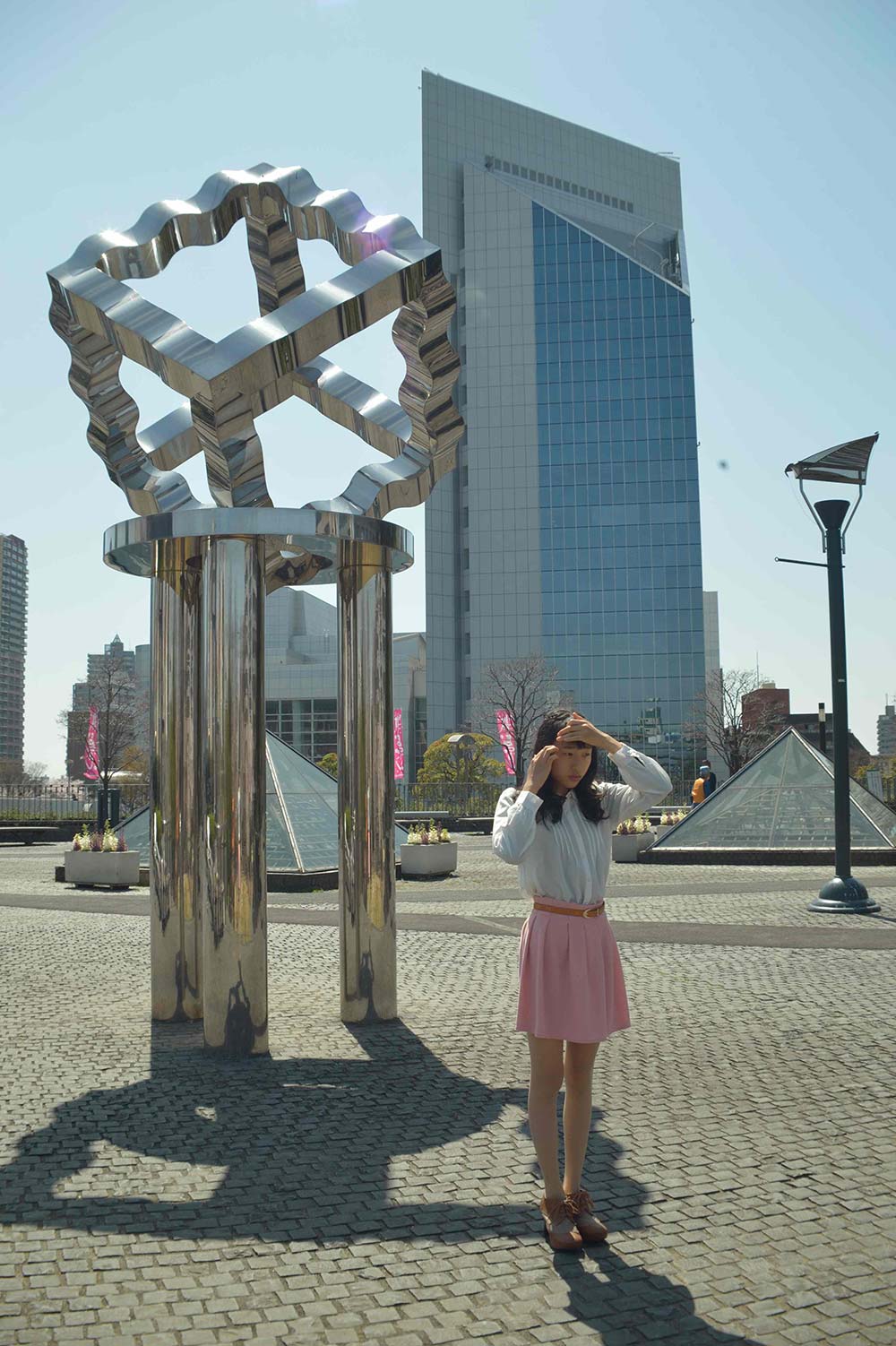
Nikon Df, Auto NIKKOR WIDE-ZOOM 3.5-8.5cm f/2.8-4 (at 35mm equivalent)
Aperture: f/11
Shutter speed: 1/400 s
Sensitivity: ISO 400
Image quality mode: RAW
White balance: Auto
D-Lighting: Auto
Picture Control: Neutral
Axial Color Aberration: None
Lateral Color Aberration: None
Vignette Control: None
Date of capture: March 2015

Nikon Df, Auto NIKKOR WIDE-ZOOM 3.5-8.5cm f/2.8-4 (at 50mm equivalent)
Aperture: f/8
Shutter speed: 1/500 s
Sensitivity: ISO 400
Image quality mode: RAW
White balance: Auto
D-Lighting: Auto
Picture Control: Neutral
Axial Color Aberration: None
Lateral Color Aberration: None
Vignette Control: None
Date of capture: March 2015
Samples 1 and 2 were captured at the wide-angle 35mm focal length with an aperture setting of f/11. As both were backlit, contrast is a little low. However, though image quality suffers a little at the extreme edges of the frame, it is clear that there is little ghost and image quality is more than sufficient. Sample 3 was captured at the 50mm focal length with an aperture setting of f/8. The background blur achieved is considered quite good for a lens of that time. With portions of the image that are in focus being sharp, this seems to be the best position throughout the entire zoom range.
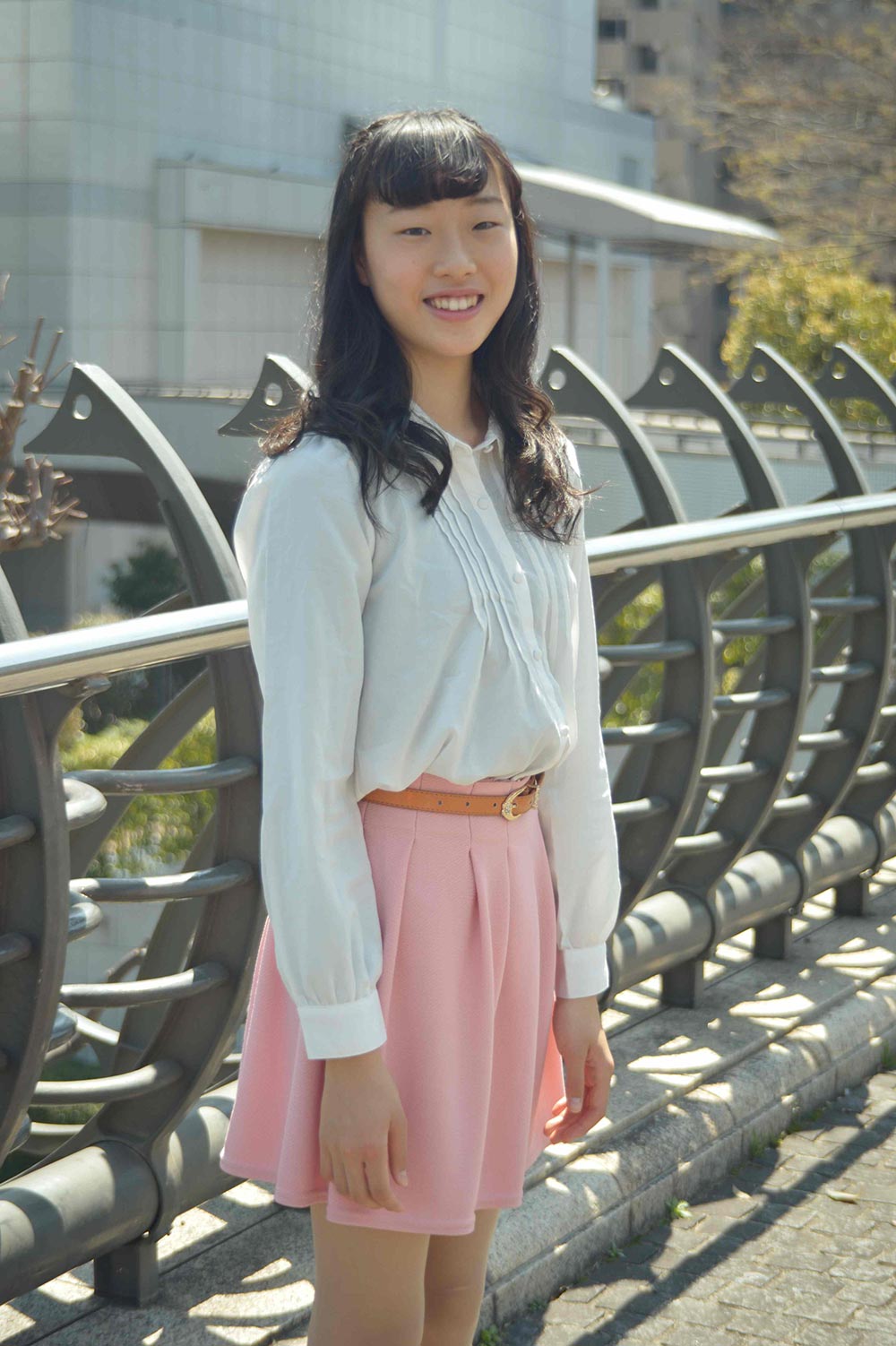
Nikon Df, Auto NIKKOR WIDE-ZOOM 3.5-8.5cm f/2.8-4 (at 85mm equivalent)
Aperture: f/8 (f/11)
Shutter speed: 1/400 s
Sensitivity: ISO 400
Image quality mode: RAW
White balance: Auto
D-Lighting: Auto
Picture Control: Neutral
Axial Color Aberration: None
Lateral Color Aberration: None
Vignette Control: None
Date of capture: March 2015
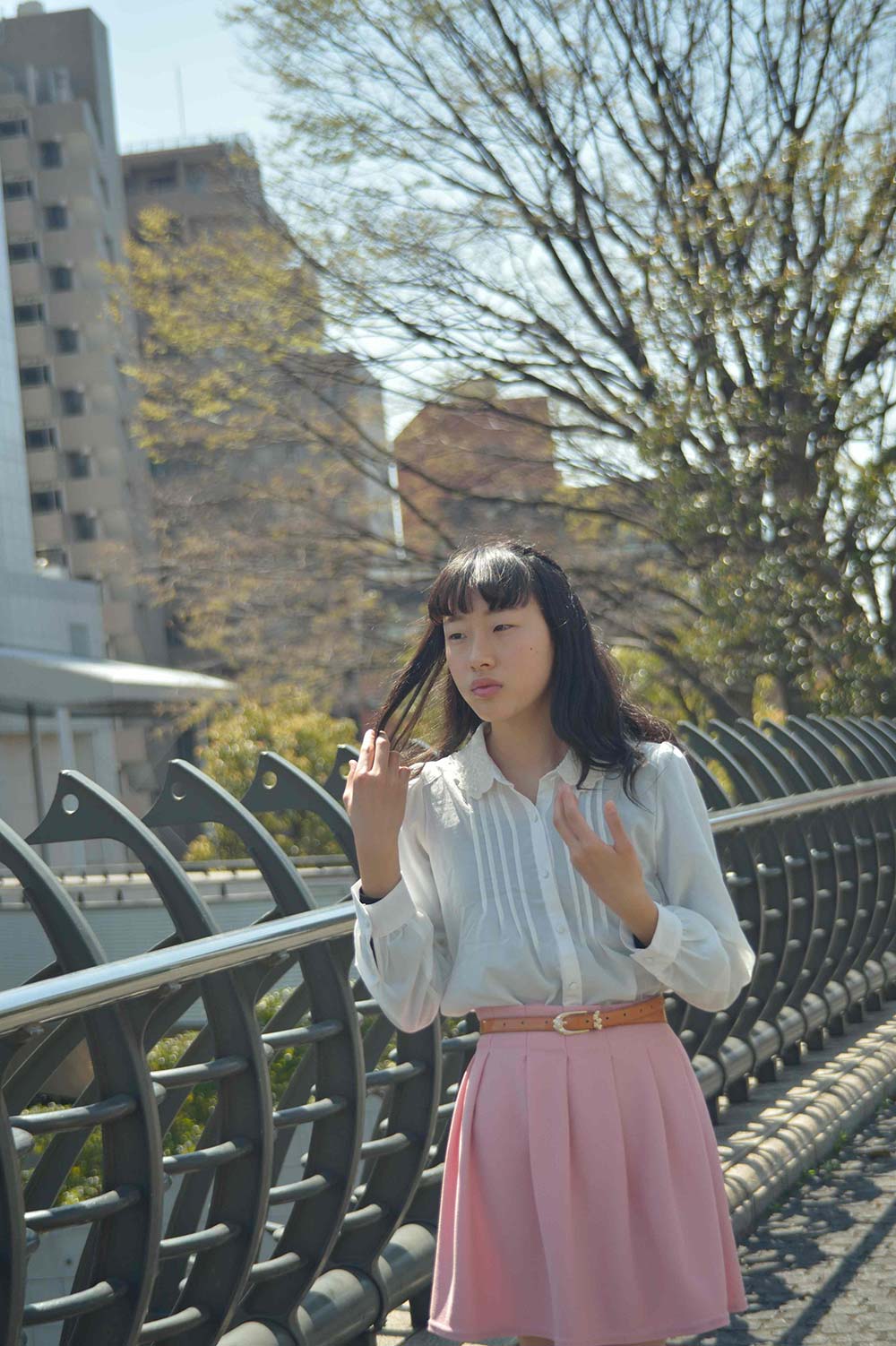
Nikon Df, Auto NIKKOR WIDE-ZOOM 3.5-8.5cm f/2.8-4 (at 85mm equivalent)
Aperture: f/5.6
Shutter speed: 1/1000 s
Sensitivity: ISO 400
Image quality mode: RAW
White balance: Auto
D-Lighting: Auto
Picture Control: Neutral
Axial Color Aberration: None
Lateral Color Aberration: None
Vignette Control: None
Date of capture: March 2015
Sample 4 was captured at the telephoto 85mm focal length with an aperture setting of f/8 (f/11 displayed). If you look at portions around the subject's face, you'll see that image quality at frame peripheries is a little soft. However, this level of softness is likely acceptable with portrait photography. Sample 5 was captured at the telephoto 85mm focal length with an aperture setting near maximum aperture at f/5.6 (f/8 displayed). The shot was composed to emphasize blur characteristics. Though background blur tends to exhibit a little double-line blur, the results achieved can be considered average for a lens of that time. The subject's face is positioned at the center of the frame. If we look at reproduction of her face and hair, we see that sharpness is good at the center of the frame.
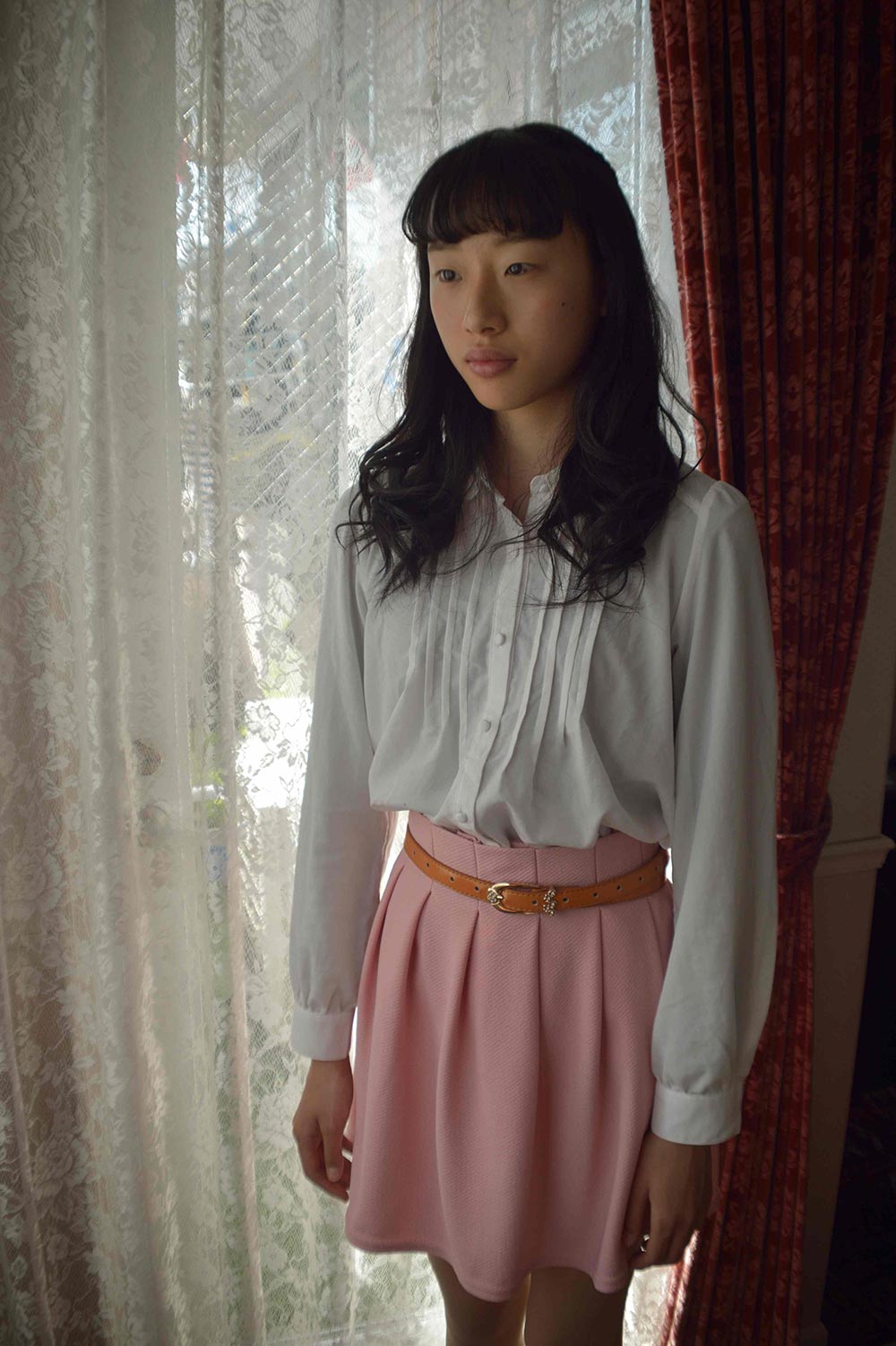
Aperture: f/5.6
Shutter speed: 1/400 s
Sensitivity: Auto
Image quality mode: RAW
White balance: Auto
D-Lighting: Auto
Picture Control: Neutral
Axial Color Aberration: None
Lateral Color Aberration: None
Vignette Control: None
Date of capture: March 2015
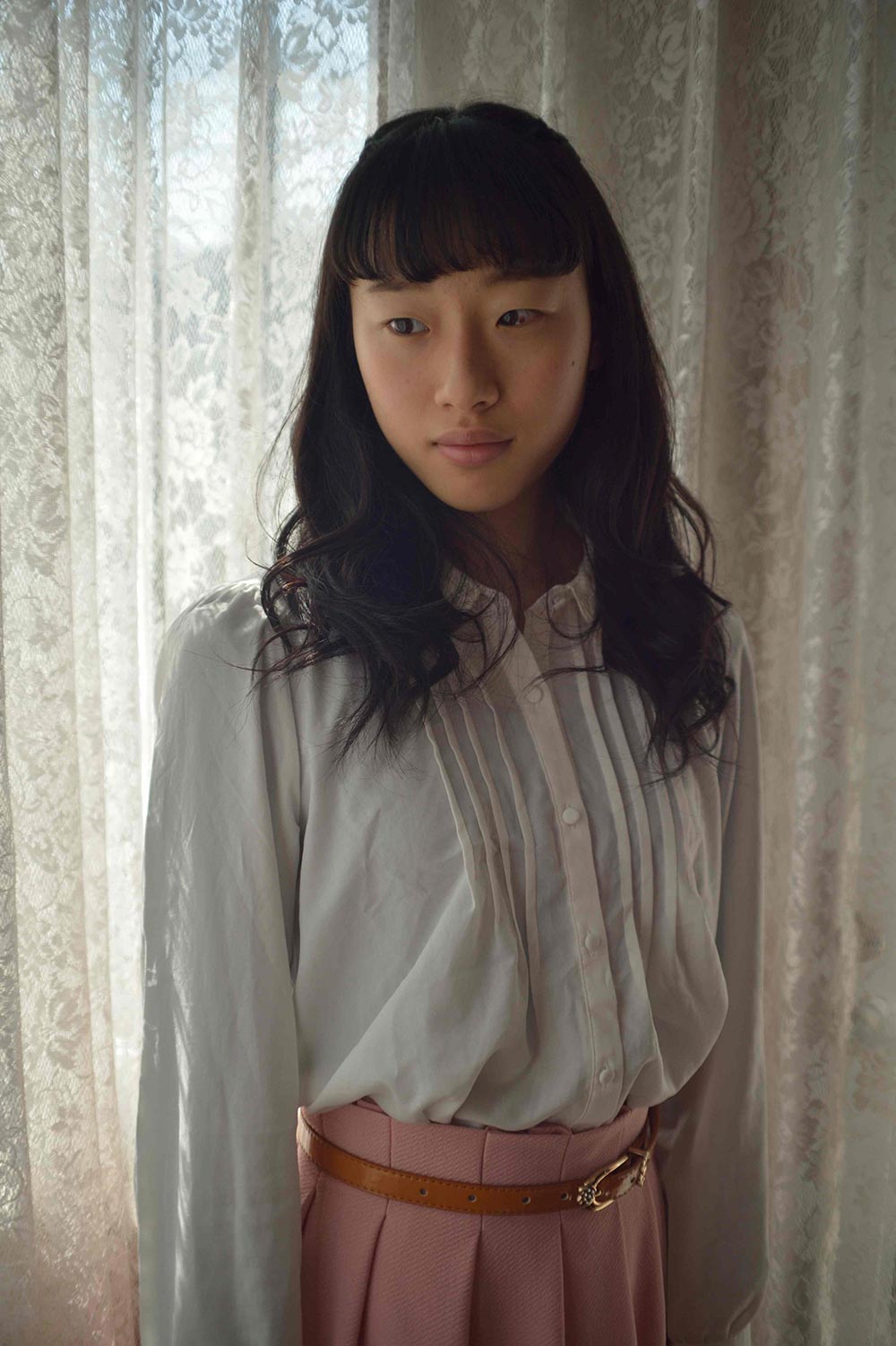
Nikon Df, Auto NIKKOR WIDE-ZOOM 3.5-8.5cm f/2.8-4 (at 50mm equivalent)
Aperture: f/4
Shutter speed: 1/1000 s
Sensitivity: Auto
Image quality mode: RAW
White balance: Auto
D-Lighting: Auto
Picture Control: Neutral
Axial Color Aberration: None
Lateral Color Aberration: None
Vignette Control: None
Date of capture: March 2015
Samples 6 and 7 were captured indoors at a close distance. Sample 5 was captured at the wide-angle 35mm focal length with an aperture setting of f/5.6. The scene is partially backlit. While resolution is tolerable near the center of the frame, it drops at frame peripheries. In addition, a significant amount of barrel distortion can be seen. However, all in all, the image quality exhibited here is quite pleasing. This image shows that what is important is how the lens is used. Sample 6 was captured at the 50mm focal length with an aperture setting quite close to maximum aperture. It clearly shows that image quality is sufficient for practical use.
With these sample images, I found that the size and weight of the lens were not inconvenient and did not make it any less user friendly, and that while not particularly sharp, the image quality achieved with the lens makes it suitable for practical use. If we consider zoom lenses of the 1950s, this lens was surely one of the better ones. Again, it is very unfortunate that this lens was never released. What do you think?
VI. The long-awaited opening of the Nikon Museum!
What is the Nikon Museum? Where is it? I hope that all interested readers will look into information available online and elsewhere, and visit when they have the chance. The Nikon museum will open on October 17, 2015 on the reception floor of Nikon headquarters (Shinagawa Intercity Tower C, 2F, near Tokyo's Shinagawa Station). Opening of the museum planned primarily by core members from inside and outside Nikon, is a part of our centennial celebration. In fact, as a member of the cross-departmental team, I have lent my poor efforts to the establishment of the museum since it was first proposed. To this end, items, materials, and records with historical value, from inside and outside Nikon, have been collected and stored in the museum.
We have not only done such down-to-earth work but also developed the museum concept and plans, all of which has been very exciting. Naturally, the museum will present a history of Nikon, its core technologies, and possibilities for the future of Nikon, but it will also offer a science lab where visitors and their children can learn about optics through play. Of course, ephemeral trial production models will also be displayed. The Auto NIKKOR WIDE-ZOOM 3.5-8.5cm f/2.8-4, introduced in Tale 56, and photos by the famous photographer Hideyuki Abe will also be exhibited. I strongly encourage anyone who is able to visit the museum when it opens. We look forward to seeing you.

NIKKOR - The Thousand and One Nights
The history of Nikon cameras is also that of NIKKOR lenses. This serial story features fascinating tales of lens design and manufacture.

